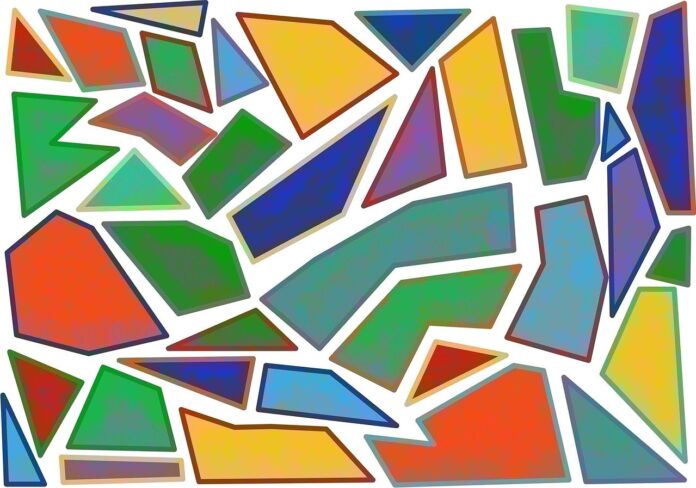The world of nostalgic entertainment has been undergoing a dramatic transformation with the rise of AI in the industry. The infusion of AI in nostalgic entertainment trends is reshaping how audiences experience and engage with their favorite memories, characters, and moments from the past. AI in nostalgic entertainment trends is revolutionizing the way content is created, personalized, and delivered, offering viewers a fresh take on the classic content they love. From bringing back classic TV shows and films to recreating iconic characters through AI technology, AI in nostalgic entertainment trends is making it possible to relive the past in ways that were once unimaginable. This article explores ten crucial factors about AI in nostalgic entertainment trends and how it’s changing the entertainment landscape forever.
1. AI-Driven Content Personalization for Nostalgic Audiences
One of the most exciting aspects of AI in nostalgic entertainment trends is the ability to personalize content for specific audiences. In the past, nostalgic entertainment was limited to reruns and collections that may or may not appeal to all viewers. With AI in nostalgic entertainment trends, however, streaming platforms can now curate content based on individual viewing habits, age, preferences, and even cultural backgrounds. This means that users are no longer confined to broad categories; instead, they receive recommendations and suggestions tailored to their unique nostalgia triggers.
AI can analyze what kind of old movies, TV shows, and music a viewer tends to enjoy, as well as their viewing patterns, and use this data to offer a personalized experience. This level of customization helps enhance the nostalgia factor, ensuring that content not only brings back memories but also fits perfectly with current tastes.
2. Virtual Reboots of Classic TV Shows and Movies
The concept of reboots has long been a staple in the entertainment industry. However, AI in nostalgic entertainment trends is taking this to the next level by creating virtual reboots of classic TV shows and movies. AI can analyze existing footage, scripts, and storylines to generate new episodes or scenes that feel authentic to the original while integrating modern storytelling techniques and trends.
By utilizing AI to enhance the production process, creators can revisit beloved shows and films in ways that were previously unimaginable. Virtual reboots can include advanced CGI, AI-generated voiceovers, or even bringing back iconic actors through deepfake technology. This results in a seamless blend of nostalgia and innovation, offering both old fans and new audiences an exciting way to experience their favorite content.
3. AI-Generated Content Remakes with a Nostalgic Twist
AI in nostalgic entertainment trends is not just about reboots and remakes; it’s also about enhancing old content to fit today’s standards. Through AI algorithms, older films and TV shows can be remastered with improved visuals, sound, and even additional scenes. For example, AI can upscale old footage, making it sharper and more vibrant without losing its nostalgic charm.
Moreover, AI can help integrate new, nostalgic twists into older content. Imagine an old black-and-white movie being enhanced with colorization, advanced sound editing, and even scenes that were cut from the original film. With AI in nostalgic entertainment trends, the possibilities are endless, and content that was once limited by technology or time can now be revitalized and enjoyed by a whole new generation of fans.
4. Creating New Stories Using Classic Characters
In nostalgic entertainment, one of the most beloved aspects is the iconic characters that defined entire eras of television and film. AI in nostalgic entertainment trends is enabling the creation of entirely new stories based on these classic characters. Using AI, writers can explore untold storylines and alternative realities for beloved characters, offering fresh content while maintaining the essence of the originals.
This approach allows for the exploration of “what if” scenarios or even the resurrection of characters in completely new settings, such as modern-day adaptations or futuristic worlds. AI allows storytellers to play with nostalgia while pushing the boundaries of creativity, offering fans exciting new content that both respects the past and looks forward to the future.
5. AI in the Restoration of Classic Music and Soundtracks
Music plays a significant role in nostalgic entertainment, as songs often evoke powerful emotions and memories from specific eras. AI in nostalgic entertainment trends is revolutionizing how classic music and soundtracks are restored and reimagined. AI algorithms can analyze old tracks, clean up distortions, enhance sound quality, and even recreate lost or damaged portions of songs.
Moreover, AI can be used to remix and reimagine older music in a way that blends contemporary sounds with vintage elements. For example, AI might create remixes of classic songs by artists from the 60s or 70s, adding modern beats and production techniques while maintaining the core essence of the original track. This allows nostalgic music to reach new audiences while providing longtime fans with a fresh take on the tunes they love.
6. Interactive Nostalgia Experiences with AI
With AI in nostalgic entertainment trends, interactivity is becoming a key element in the way audiences engage with content. AI allows viewers to interact with nostalgic TV shows, movies, and video games in new and innovative ways. For instance, AI-powered interactive storylines can allow users to make decisions that influence the direction of their favorite old-school stories, creating an immersive experience.
Additionally, AI is playing a huge role in interactive video games that allow players to revisit classic game franchises with modern technology. These games not only feature enhanced graphics and gameplay but also integrate AI-powered elements, such as more complex non-playable characters (NPCs) and dynamic storylines. These interactive experiences enable audiences to experience nostalgia with a fresh, participatory twist.
7. AI in the Creation of Nostalgic VR Worlds
Virtual Reality (VR) is one of the most exciting technological advancements in entertainment today, and AI in nostalgic entertainment trends is making it possible to step into fully immersive VR worlds based on beloved classic content. Imagine walking through the streets of your favorite TV show or movie, interacting with characters from the past, or revisiting a childhood favorite location in 360 degrees.
AI plays a crucial role in building these immersive VR experiences by generating realistic environments, characters, and scenarios. The result is a virtual journey back in time where fans can relive their favorite moments in a way that feels tangible and personal. AI in nostalgic entertainment trends is bringing the past to life in a manner that was once confined to dreams.
8. Predictive Analytics to Anticipate Nostalgic Trends
Predicting which nostalgic content will resonate with audiences has traditionally been a challenge. However, with AI in nostalgic entertainment trends, this task has become much easier. AI algorithms can analyze large datasets from streaming platforms, social media, and historical content trends to predict what content will generate the most nostalgia.
By using machine learning and predictive analytics, AI helps content creators identify which classic content is likely to see a resurgence in popularity. This means that entertainment companies can create new nostalgic experiences or remakes that have a higher likelihood of success, ensuring that they tap into audience demand at just the right moment.
9. Enhancing Nostalgic Events with AI
Live events are another area where AI in nostalgic entertainment trends is making an impact. Concerts, live theater, and even pop-up experiences that are centered around nostalgic content can now be enhanced with AI. AI can analyze audience behavior during these events and provide real-time feedback to performers and organizers, helping them adjust their approach to improve the experience for attendees.
Additionally, AI can be used to create dynamic visual effects and soundscapes, making live events feel even more immersive. For example, a live tribute concert to a famous artist can be enhanced with AI-generated visuals that reflect the era the artist was most famous for, while maintaining a cutting-edge, futuristic presentation.
10. AI’s Role in Curating Nostalgic Content for Global Audiences
Finally, AI in nostalgic entertainment trends is helping content creators curate nostalgic content for global audiences. In the past, nostalgic content was often limited to specific geographical regions or cultures. However, AI allows entertainment companies to analyze global preferences and tailor nostalgic content to appeal to a broader range of audiences.
AI can identify which classic content resonates in different parts of the world and help curate personalized recommendations that highlight regional nostalgia. By leveraging this technology, streaming services and broadcasters can ensure that their nostalgic offerings have a global appeal, thus increasing their reach and engagement with diverse audiences.
Conclusion
The role of AI in nostalgic entertainment trends is expanding and evolving in fascinating ways, changing how we consume and interact with our favorite pastimes. From personalized content recommendations to interactive VR experiences and AI-generated remakes, AI in nostalgic entertainment trends is reshaping the entertainment landscape. As technology continues to improve, the potential for AI to create even more innovative, immersive, and personalized nostalgic experiences is limitless. Whether you’re a fan of classic TV shows, movies, music, or video games, AI is set to enhance your nostalgic experiences, making them more engaging and exciting than ever before.














